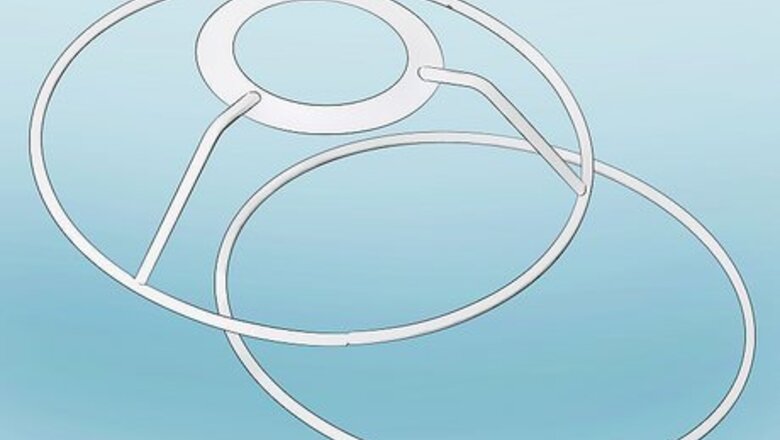
views
Method One: Drum Shade
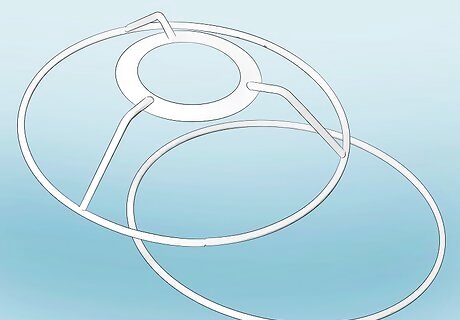
Recycle your old lamp wire rings. You know that ugly old lamp you have sitting on that desk in the corner? Don't let it go to waste! Believe it or not, you can resurrect that perfectly good frame from the traps of that old, not-so-trendy fabric. Some lamps will have one-piece frames and some will have a set of two rings: a washer top and a bottom wire ring, generally. If you're unhappy with what you have at your disposal, new lampshade wire rings are available at some craft supply stores. This project will be constructing a drum shade--the fancy name for a circular shade. These are generally made up of two separate rings.
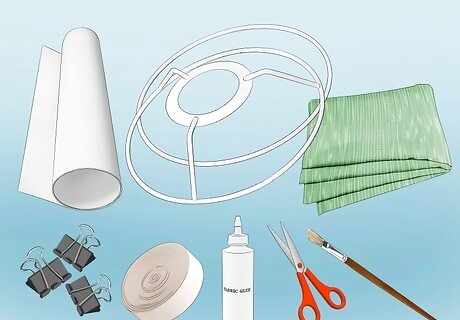
Assemble your materials. Making your own drum shade can be pretty easy as long as you have high-quality, durable materials. Get everything in order before you get started. There will be no last-minute trips to the store on your watch. Fabric Styrene Wire rings Bulldog clips Fabric glue Bias tape Scissors Paintbrushes
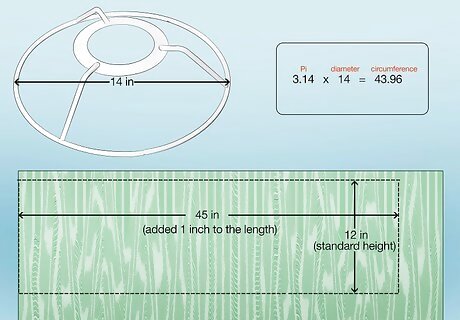
Know your dimensions. Maybe you have all the materials, but are they the right sizes? Check out your lamp rings first; they're the hardest to replace. Your fabric needs to be at the very least one inch (2.5 cm) wider and longer than the width and circumference of your lampshade. You can either measure the circumference with a measuring tape or use the 'ol handy 3.14 x diameter trick. For example, if the diameter of your lampshade is 14 inches, 3.14 x 14 = 43.96, the circumference of your lampshade. So, you should be working with material that's at least 45 inches long. You can choose how far apart you want your rings to be to determine the width . A little more than a foot (31 cm) is standard.
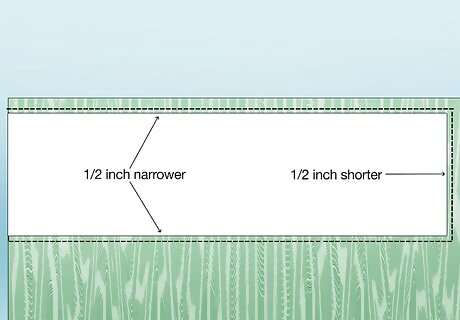
Cut your fabric and styrene to the correct size and shape. Once you've measured your fabric, you can cut your styrene to fit it. The styrene should be 1 inch (2.5 cm) narrower and 1/2 inch (1.25 cm) shorter than your fabric. Styrene doesn't stick well to synthetic fibers -- use linen, cotton or silk for your fabric.
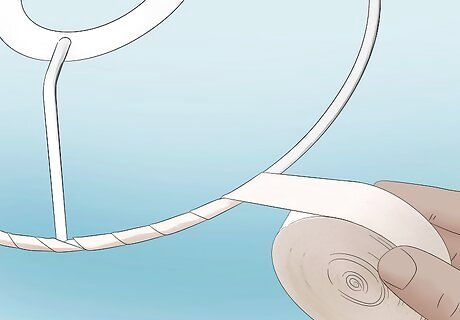
Wrap the lamp wire with bias tape. This customizes your lamp, hides any old, rusting wire, and coordinates even the inside of the lamp with the room. Be sure to wrap the rings and spokes. Bias tape comes in different colors and patterns; you can even make your own. Use quick-drying fabric glue and apply to the rings, not the tape. When you come to the end, just cut it off and adhere.
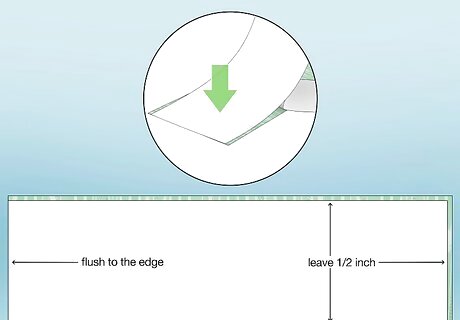
Peel back the protective layer on your styrene little by little. Place it on the fabric as you go to ensure it's bubble free and straight. Leave 1/2 inch (1.25 cm) of extra material on 3 sides--both long sides and one short side. Make sure the 4th side is flush to the styrene.
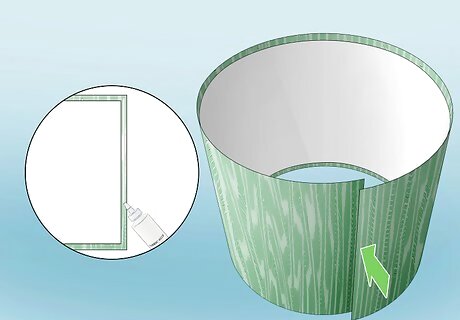
Glue the short sides together. Put glue on the 1/2 inch of fabric that is exposed and place on top of the other side. You should now have a circular form of material in your hands. Put weights in the center on the inside and let dry for 10 minutes. After the 10 minutes are up, roll it along your table to see that it stays in a tube-like shape.
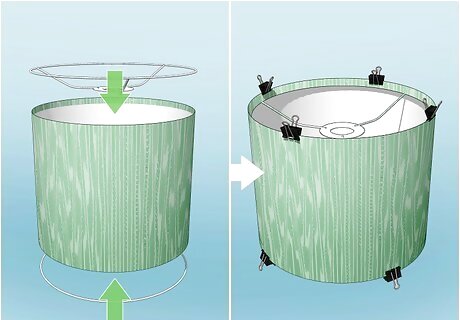
Clip with bulldog clips. Those are the kind that are black, metallic, and are generally used to hold papers together. Rest the wire rings between the "arms" of the clips. Use 4 or 5 clips on each side. Rest the weight of the lamp shade on the rings clipped on the bottom.
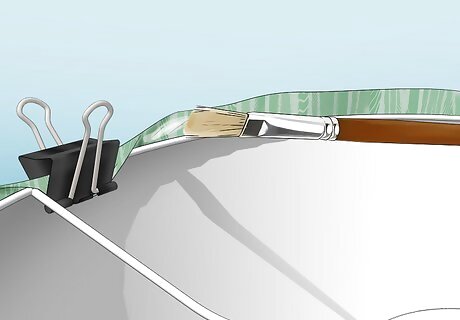
Brush glue onto the exposed fabric. Start at the top, using your paintbrushes to spread a light layer of glue on the exposed 1/2 inch of material. Remove the clips as you go and replace over the glued area.
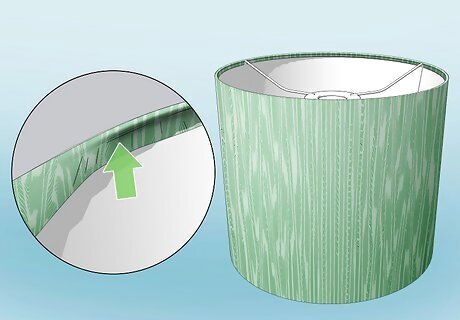
Tuck the fabric around the wire rings. The first time you go around, don't be concerned with tucking it perfectly. Tuck it loosely at first, then circle back to smooth out the kinks. Repeat these two steps for both ends. Take 15 minutes between the top and bottom to allow for drying.
Method Two: Paneled Shade
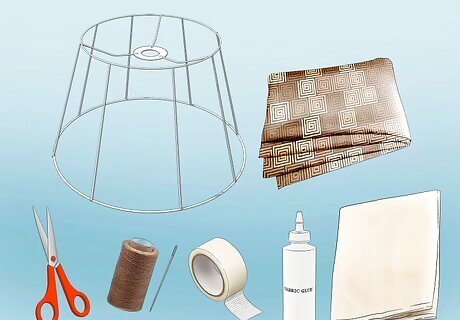
Get organized. The next hour or so of your life will be much easier if everything you need is displayed neatly in front of you. Clear the area and get all your tools in order. Anchor yourself next to the sewing machine, if you have one. Wire frame Fabric Scissors Needle and thread Seam tape Glue Muslin Lining (optional) Trim (optional)
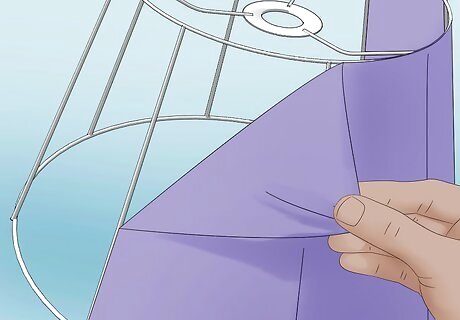
Remove the old fabric from your frame. You'll be surprised how easy this can be to do. If your frame bends while you're messing with it, just bend it back to its original shape, no harm done. All paneled shades use frames, not rings. A paneled shade can be triangular, rectangular, square, hexagonal, or bell shaped. This tutorial can be used for any of these shapes.
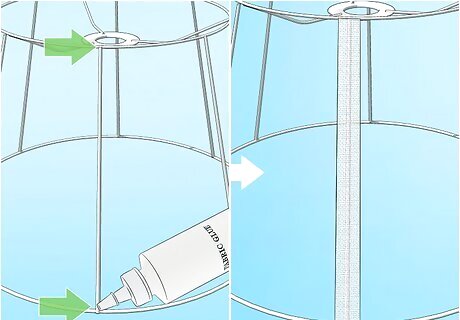
Wrap the spokes with seam tape. The spokes are the vertical wires that create the shape of the panels. If you'd like to go above and beyond, you can wrap the outside frame as well. Use a hot glue gun and place a drop of glue at the beginning of your tape and one at the end to attach. Repeat this process for each spoke.
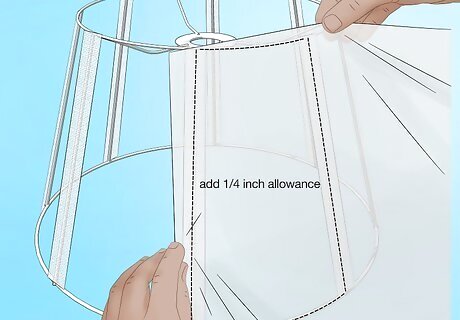
Drape muslin over each size of panel to create a pattern. Allot 1/4 of an inch (.63 cm) for seam allowances. This is important: If your frame is uniform all the way around, one panel will suffice. But if your shade is, for example, rectangular in shape, create a pattern for each size of panel. Use chalk or a marking pen to trace the spokes that form the panel shape onto the muslin. Take pins to the frame to keep it tight.
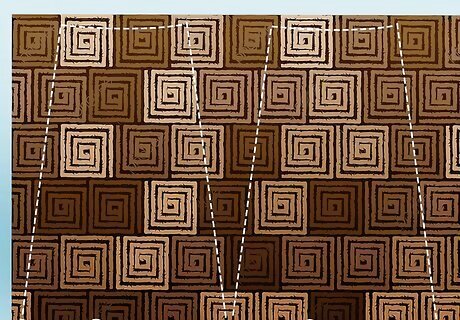
Cut out your fabric for each panel. You'll end up with as many pieces of fabric as you have sides to your frame. Again, if there are panels of different sizes, be sure to cut out fabric of different sizes and remember that 1/4" seam allowance! If you are also using a lining, cut that out, too, to the same shape and size. If your fabric is heavy enough, you may forgo the lining altogether.
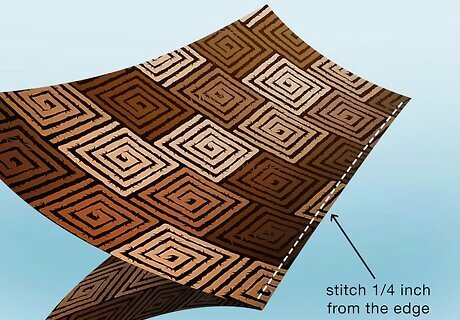
Stitch the vertical seams together. With right sides together, sew the panels together with 1/4" (.63 cm) seams. If you have different sized panels, make sure they're sewn together in the proper order. Do this for the lining, too, if you're using one.
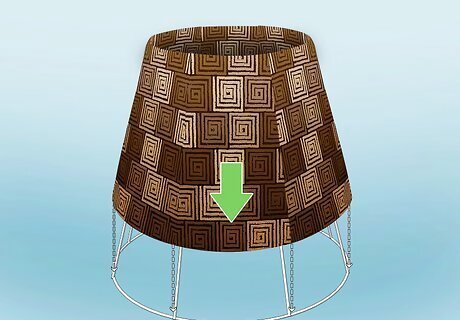
Line up the seams with the spokes. Turn the fabric right side out and stretch it over the frame. Adjust it as necessary and whipstitch (or overcast stitch) the extra fabric of the seams to the tape-wrapped spokes with a needle and thread.
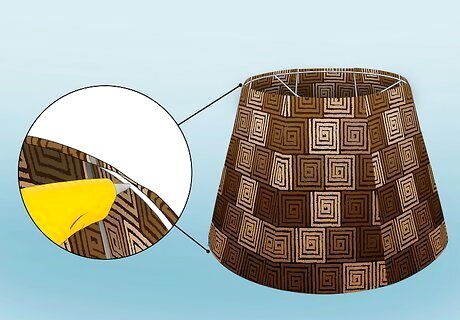
Glue to the top and bottom. Pull your fabric taut and, using a few drops of hot glue, secure it only to the frame. Trim the excess fabric as need be.
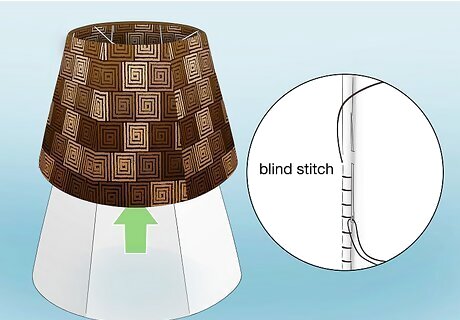
Insert the lining (optional). Pin the lining inside the lampshade with the wrong sides together. Align the seams to the spokes as you did with the fabric, and blind stitch the lining to the inside. Hand-sew invisible stitches to form a neat, finished edge. If you're not so sure whether you want to fuss with a lining or not, hold your material up to the light. If the right amount of light already passes through it, don't worry about it.
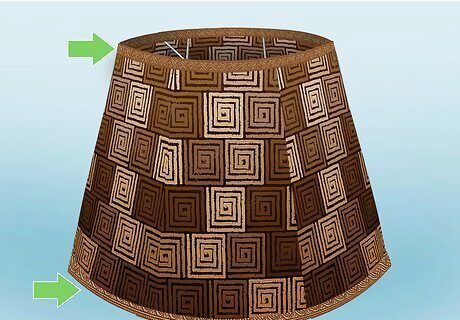
Add detailed trim (optional). Available at all craft supply stores, decorative trim (beads, tassles, you name it) can add the finishing touches onto your own personalized shade. This can be done with a bit of hot glue in a matter of minutes, so why not?
Method Three: Leftover Fabric Shade
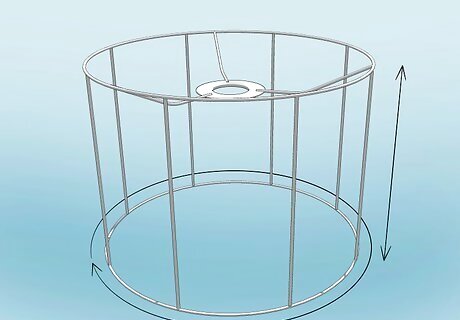
Take the measurements of your frame. How far is it between the top and bottom wires? How far is it around? If you are working with a paneled shade, simply take the measurement of each panel; if you are working with a circular shade, measure the circumference (3.14 x diameter). This is necessary to find out how long and wide your strips of fabric need to be and the amount that will cover your entire shade.
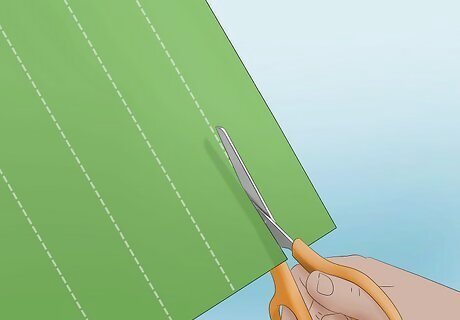
Cut strips of fabric. This is where the shade becomes all your own. Use one style of material for a battered, distressed look or use all types of coordinating colors and patterns. Just make sure they're long enough! Add one extra inch for the seam allowance. This is needed to wrap around the wire frame. If your lamp is 20" (51 cm) around, make sure you have fabric that, in total, amounts to at least 22" (56 cm) wide. You need adequate overlap to keep the wire frame from showing. Of course, greater overlap than that is always safe, too. If each strip of fabric is 2" (5 cm) across, have at least 11 strips of fabric ready.
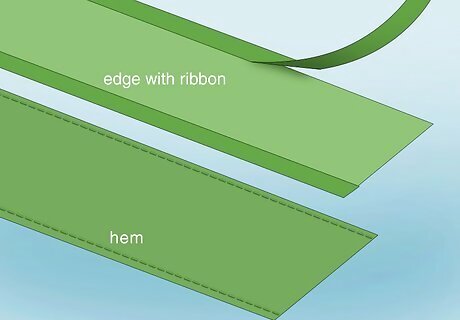
Hem, trim, or edge the fabric with ribbon. This ensures that it stays neat, doesn't fray, and looks professional. The edges will only be seen from the inside of your lamp. If you're pressed for time or simply can't be bothered, a simple trim is fine.
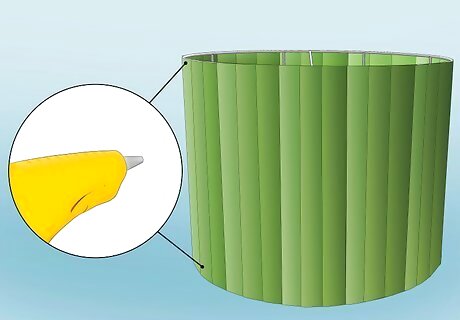
Attach the strips to the top and bottom of the lampshade. Using your 1/2 inch (1.25 cm) on either side, affix the strip to the top of the shade with a staple gun, hot glue gun, or needle and thread. Repeat for the bottom. If you use a hot glue gun and glue the material to the wire, you will not be able to gather the fabric when it's finished. If you use a staple gun, it's a good idea to add decorative trim around the top and bottom to obscure those tiny metallic lines from view.
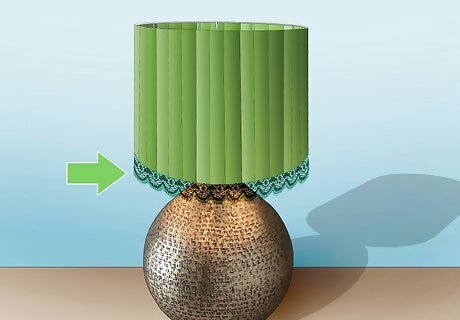
Adjust the strips and add trim (optional). You can gather the material together if you stapled or used a needle and thread. Adjust the material to achieve the look you want. Beads, tassles, or extra ribbon can be added onto the top and bottom of your shade to hide any less-than-perfect areas or simply to add more flair.














Comments
0 comment